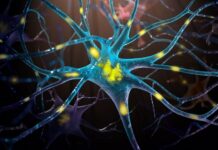About one to two of every 1000 babies are born with hydrocephalus, a condition in which too much fluid builds up inside the skull. There is no cure, but treatment may provide long-term relief. Four-year-old Ananya Shah was diagnosed with Hydrocephalus at birth. Born premature in the 26th week, she underwent 5 operations, her last one at the age of 2.5 years. Her condition now is normal and she is now considered naughtier than her twin sister.
ABOUT HYDROCEPHALUS
Hydrocephalus means “water on the brain”. Hydrocephalus is a buildup of fluid inside the skull that leads to brain swelling due to a problem with the flow of the fluid that surrounds the brain. The fluid is called cerebrospinal fluid, commonly referred to as CSF. The CSF is located and produced within cavities of the brain called ventricles. The function of CSF primarily is to cushion the delicate brain and spinal cord tissue from injuries and maintain proper balance of nutrients around the central nervous system. Normally, CSF moves through the brain and the spinal cord, and is soaked into the bloodstream. CSF levels in the brain can rise if: flow of CSF is blocked
It does not get absorbed into the blood properly
Your brain makes too much of it
Left untreated, hydrocephalus will create increased pressure on the brain and damage brain tissue. Hydrocephalus may begin while the baby is growing in the womb. It is common in babies who have a myelomeningocele, a birth defect in which the spinal column does not close properly. Hydrocephalus may also be due to genetic defects and certain infections during pregnancy.
This condition most often occurs in children, but may also occur in adults and the elderly, known as acquired hydrocephalus. A variety of causes can contribute to it like head injury, tumors, and meningitis. In most cases the circumstances contributing to hydrocephalus are beyond a person’s control.
Symptoms of hydrocephalus depend on age, amount of brain damage and what is causing the buildup of CSF fluid. In infants, it causes the fontanelle (soft spot) to bulge and the head to be larger than expected. Early symptoms may also include eyes that appear to gaze downward, irritability, seizures, separated sutures, sleepiness and vomiting.
How is Hydrocephalus Managed
The goal of treatment is to reduce or prevent brain damage by improving the flow of CSF. Surgery may be done to remove a blockage, if possible. If not, a flexible tube called a shunt may be placed in the brain to re-route the flow of CSF. The shunt sends CSF to another part of the body, such as the belly area, where it can be absorbed. A shunt may help to control the hydrocephalus, but is not a cure.

















![Sirio Launches Global Research Institute for Longevity Studies [SIA]](https://www.worldpharmatoday.com/wp-content/uploads/2019/09/Sirio-218x150.jpg)

